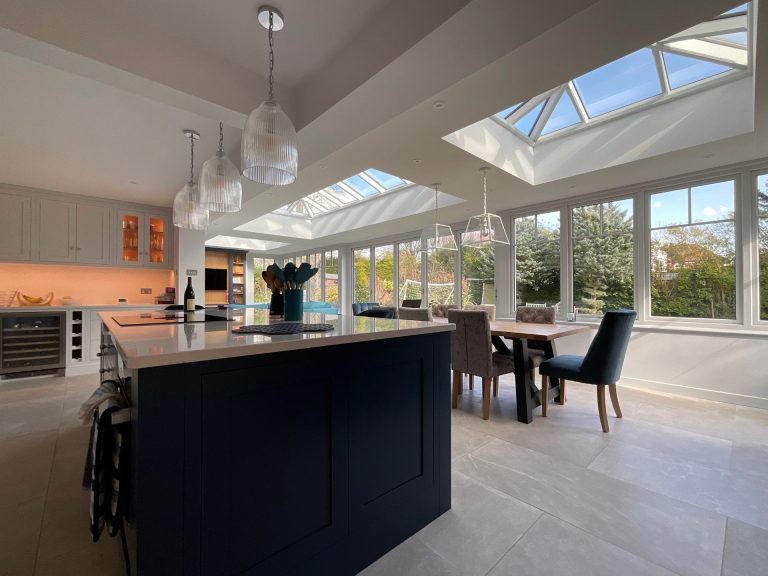Orangeries, What Are They?
Historical Background of Orangeries
Modern Definition and Purpose of Orangeries
In contemporary architecture, orangeries have transcended their original purpose to become versatile living spaces that harmonise with both traditional and modern homes. Unlike their counterparts, conservatories, orangeries feature more solid construction with brick or stone walls, offering enhanced thermal efficiency and structural integrity. These airy sanctuaries provide a seamless transition between indoor comfort and outdoor tranquillity, serving as extensions of the home for various activities.
Key Features of Orangeries
- Expansive glazed windows and doors, flooding the space with natural light.
- Lantern roofs, adding a touch of elegance while maximising sunlight penetration.
- Solid brick or stone walls, providing insulation and privacy.
- Integration with the existing architecture, creating a cohesive aesthetic.
- Heating and ventilation systems, ensuring year-round comfort.
Advantages of Orangeries Over Conservatories
- Greater thermal efficiency, allowing for comfortable use throughout the year.
- Enhanced privacy and security due to their solid construction.
- Seamless integration with the existing property, preserving architectural integrity.
- Customisable design options, catering to individual preferences and lifestyle needs.

Contact Us Today for a Quote
Please use our contact form to arrange a free site visit or contact us with any queries you have.
If you would prefer for us to quote using your own plans then please fill out the contact form with your details and we will be in touch to acquire your plans, surveys, photos and a design brief explaining what you are trying to achieve.
Types of Orangeries
Orangeries come in a variety of styles to suit different architectural aesthetics, including:
- Traditional orangeries, characterised by classic design elements and ornate detailing.
- Contemporary orangeries, featuring sleek lines and minimalist aesthetics.
- Bespoke orangeries, tailored to the specific requirements and preferences of the homeowner.
Materials Used in Building Orangeries
Orangeries are typically constructed using premium materials chosen for their durability, aesthetic appeal, and thermal performance.
Common materials include:
- Hardwood, prized for its natural beauty and longevity.
- Aluminium, known for its strength, lightweight, and modern aesthetic.
uPVC (unplasticised polyvinyl chloride), offering excellent thermal insulation and low maintenance.
Design Considerations for Orangeries
- Orientation to maximise sunlight exposure and views.
- Size and layout to accommodate various activities and furniture arrangements.
- Architectural style to harmonise with the existing property and surroundings.
- Planning permission and building regulations compliance, ensuring legal compliance and peace of mind.
Benefits of Adding an Orangery to Your Home
- Increased natural light and sense of space, promoting well-being and productivity.
- Seamless indoor-outdoor living experience, blurring the boundaries between inside and outside.
- Enhanced property value and curb appeal, making it an attractive investment.
- Versatile use as a dining area, lounge, home office, or garden retreat, catering to diverse lifestyle needs.
Maintenance and Care of Orangeries
Orangeries as a Lifestyle Statement
Sustainability and Orangeries
Conclusion
Get in Touch Today
If you are ready to start creating your new orangery, extension or conservatory simply get in touch by filling out this contact form. Alternatively, you can call us on 01926 810 291 for a no-obligation discussion.
To learn more about the steps that go into our builds and to see the recent projects and designs we have worked on, then check out our gallery here.
Lastly, to keep up with all of our news and to find some inspiration, you can follow us on Instagram and Facebook.
